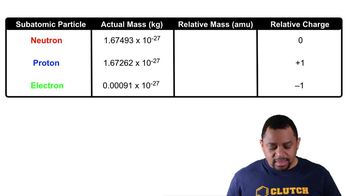Would you use the atomic number, mass number, or both to determine each of the following?
c. number of particles in the nucleus
 Verified step by step guidance
Verified step by step guidance Verified video answer for a similar problem:
Verified video answer for a similar problem:



 1:25m
1:25mMaster Subatomic Particles (Simplified) Concept 1 with a bite sized video explanation from Jules
Start learning